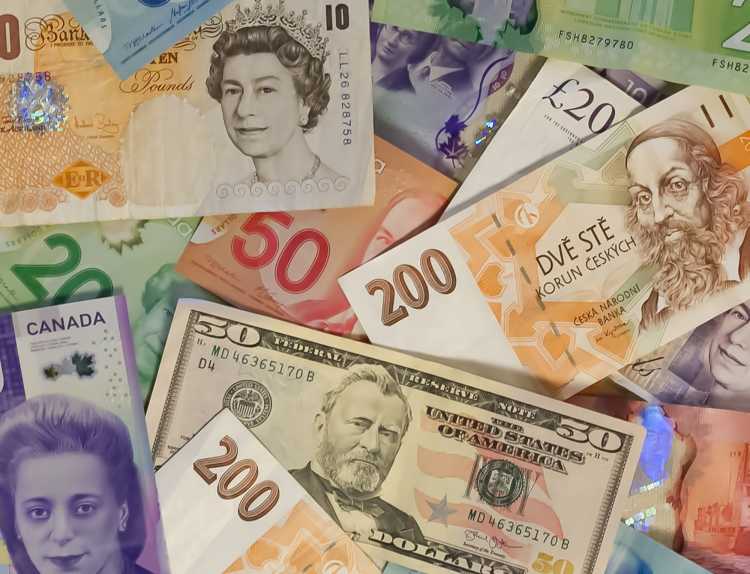Overseas transfers are easier than they seem once you understand how International Bank Account Numbers are formatted and how they differ between countries.
When trading between financial institutions domestically, we often have to gain access to that person or company’s basic bank account number in order to send money safely and accurately to the recipient. Having the specific bank account code helps money get to the right hands without any worry or transactional errors. While the domestic process is pretty upfront, what about when making international money transfers? In these cases, you use a similar number called an International Bank Account Number.
What is an International Bank Account Number (IBAN)?
International Bank Account Numbers (IBANs) are an international standard for bank identifier codes, helping international organizations accurately send overseas transactions. The IBAN format works to specify additional information to the already existing bank code so that there isn’t confusion when trying to make international money transfers. Different countries have different requirements for their International Bank Account Numbers, but even with these variations, the IBAN system simplifies cross-country financial transactions.
How many digits is an IBAN?
Under ISO standards, the full fixed-length IBAN code is up to 34 alphanumeric characters long and can sometimes be structured with different elements depending on the country’s standards. Some countries will have much longer numbers within this limit, while others will be quite short. Some IBANs include Account Numbers, Account Types, and Owner Numbers, while others just use a few identifiers. Using a generic French bank as an example:
-
ISO Country Code: This is always a two-letter country code in upper-case letters, such as FR (France).
-
IBAN Check Digits: These represent the checksum of the bank account, ‘checking’ that there are no errors, such as 76
-
National Bank Code: A code to specifically identify a bank. such as 30006
-
Branch Code (Code Guichet or Sort Code): The branch of a bank, such as 00001
-
National Check Digits (clé RIB): 12345678901
-
Account Number: 89
-
Basic Bank Account Number (BBAN): This varies in length depending on the country. In our example, it includes everything after the check digits.
-
Full IBAN: For this example IBAN, the end code would be – FR7630006000011234567890189
Are IBAN and SWIFT codes the same?
No, SWIFT codes and IBAN codes are not the same. SWIFT codes point to a specific bank, while IBAN codes point to a particular bank account. SWIFT codes are comprised of four main parts, the Bank Code, the Country Code, the Location Code, and the Branch Code that point out a specific international organization. IBANs are more specific, helping identify the detailed account. SWIFT codes and Bank Identifier Codes (BIC codes) are the same things.
Who uses IBAN?
International financial institutions use IBAN to trade in a safe and secure way. IBAN is required by a handful of countries within the IBAN registry, including:
Belgium, Croatia, Denmark, Finland, France, Germany, Greece, Greenland, Hungary, Iceland, Ireland, Italy, Liechtenstein, Malta, Netherlands, Norway, Poland, Portugal, Romania, Saudi Arabia, Spain, Sweden, Switzerland, Ukraine, United Arab Emirates, and the United Kingdom.
Some countries use IBAN, but it is not mandatory, such as Brazil, Costa Rica, Iraq, Serbia, and the Virgin Islands.
Routing numbers, SWIFT codes, BIC, and IBANs: What’s the difference?
As we previously mentioned, if a sender is trying to get a specific international bank’s information, they will be using a SWIFT code (which is the same thing as a Bank Identifier Code or BIC code). If you are trying to transfer money into a specific account, you will use an IBAN code. The United States does not currently use IBANs. Instead, the US uses routing numbers when domestically transferring money and SWIFT codes when internationally transferring money.
When to use IBAN
There are a handful of scenarios where it may be wise or necessary to use an IBAN in your transactions. Whether working with companies overseas or hiring global employees, IBANs can help ensure that you don’t send money to the wrong account.
Send international business payments
When sending overseas business payments, you will need an international bank account number to make a wire transfer. By going through your bank with an IBAN, you can ensure that money gets to the right person securely. The processing time for international payments is quick, and it is incredibly convenient for these transactions.
Suggested reading: A guide to cross-border payments
You have a global payroll
If you have to pay international employees, you may need to pay them using an IBAN to deposit money, similar to how you would need routing numbers domestically in the United States. IBAN helps ensure that your employees get paid on time, even when overseas.
Receive international payments
If you live in an IBAN country, you, of course, can also receive payments through your IBAN number. Check with your bank to see your specific IBAN number, or look for it on your account information. In the US, you will instead receive payments from IBAN-using customers by providing your ABA and Account Number.
How to find your IBAN
To find your IBAN, if you live in a country that uses it, look at the top of your bank statement. Often the IBAN number is stated there. If you do not receive paper bank statements, check your online bank account site if your bank provides one. Lastly, you can call your bank or visit them directly to inquire about your IBAN number.
How international bank account numbers work
IBANs act as routing numbers, directing payments to the exact account that you are trying to pay. The International Bank Account Number system is most common in Europe but can be found in other countries as well and is slowly gaining in popularity. Countries can have different qualifications for their IBAN numbers, but all of them are 34 characters or less. For example, an example of a German IBAN code is DE89 3704 0044 0532 0130 00. When transferring money, you provide the receiving party’s IBAN. These numbers are checked, then the payment is sent over directly to their account.
Requirements for international bank account numbers
The requirements for IBANs vary significantly between countries, though all accounts start with a two-character ISO and check digits. For example, a Brazilian IBAN requires a National Bank Code, a Branch Code, an Account Number, an Account Type, and an Owner Account Number. In comparison, El Salvador only requires a National Bank Code and Account Number. Check with your country’s requirements to better understand the formatting of your IBAN codes.
Frequently asked questions about IBAN
IBANs can be confusing, especially if your country does not use them. Learning about how International Bank Account Numbers work can be highly beneficial to you as a business owner, especially if you end up working with overseas partners. Here are a few of the most frequently asked questions about IBANs:
Why was IBAN created?
Prior to IBAN, there were different standards for bank accounts across almost every country. Often this had lead to confusion, accidentally mistaken payments, and frustration. To try to help standardize these processes, the International Organization for Standardization (ISO) created ISO 13616:1997. The standardization procedures have evolved and now stand with ISO 13616-2:2020, helping to continue to standardize and simplify international payments.
What does an IBAN number look like?
IBAN numbers vary by country due to their differing requirements. Here are a few generic examples from different countries:
-
Great Britain (UK): GB29 NWBK 6016 1331 9268 19
-
Greece: GR16 0110 1250 0000 0001 2300 695
-
Ireland: IE29 AIBK 9311 5212 3456 78
-
Italy: IT60 X054 2811 1010 0000 0123 456
-
Poland: PL61 1090 1014 0000 0712 1981 2874
Does the US participate in the IBAN system?
Currently, the US does not use the IBAN system. Instead, wire transfers to the US have to use your ABA and Account Number to specify your account. You still can send money to IBAN accounts, however. Contact your bank to see their process for sending IBAN payments or see if any of your payment software helps facilitate IBAN payments.
Conclusion
Making international payments can be easier than you think. By using the International Bank Account Number system, you can safely and quickly send money to overseas partners. Remember that when looking to transfer money internationally, not all banks use IBAN. There are plenty of alternatives to IBAN that are also secure. Ask your bank or financial advisor for more details if IBAN is not an option. Consider implementing a financial software stack that facilitates overseas payments, including IBAN payments, if you want to start regularly sending payments to international banks.

